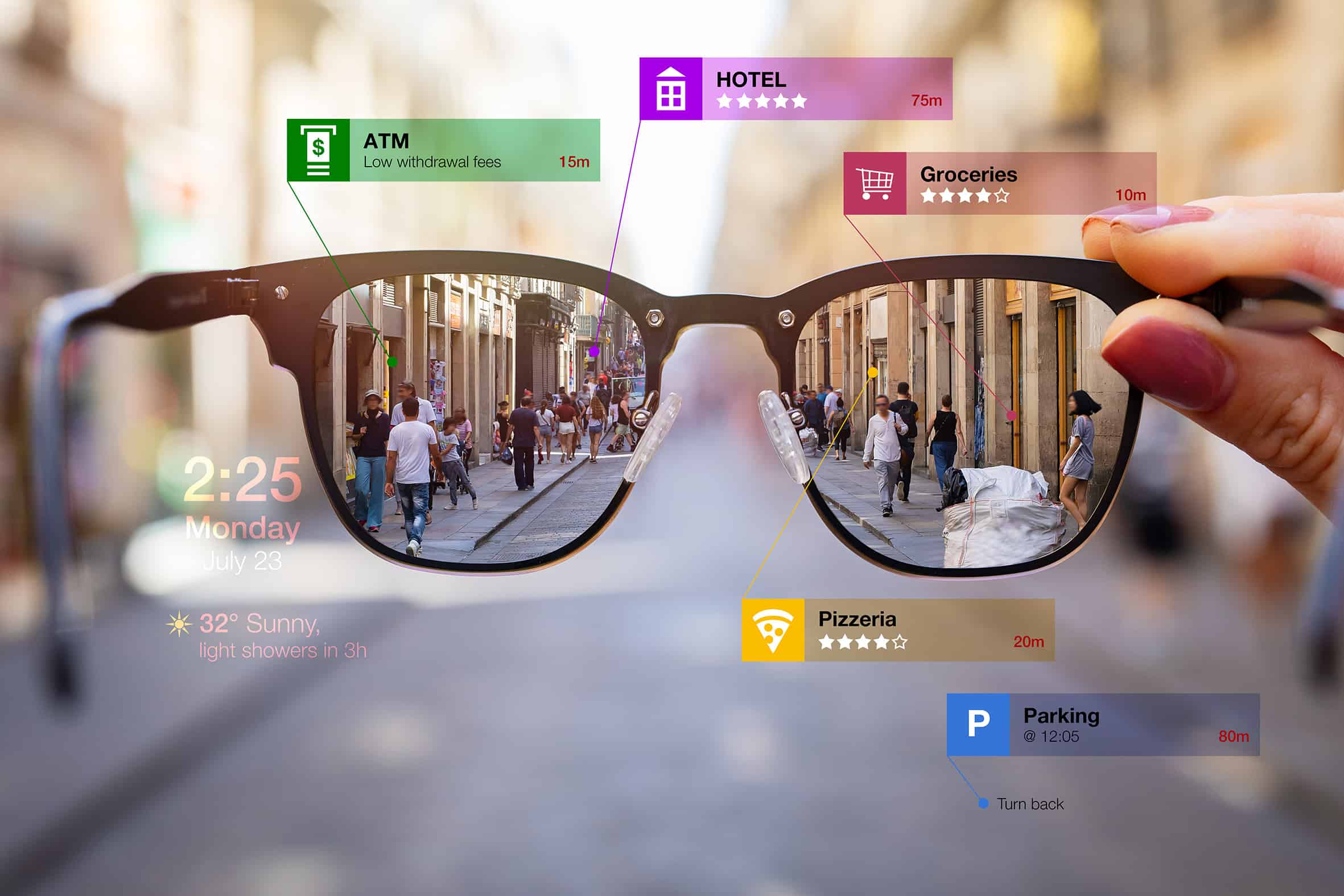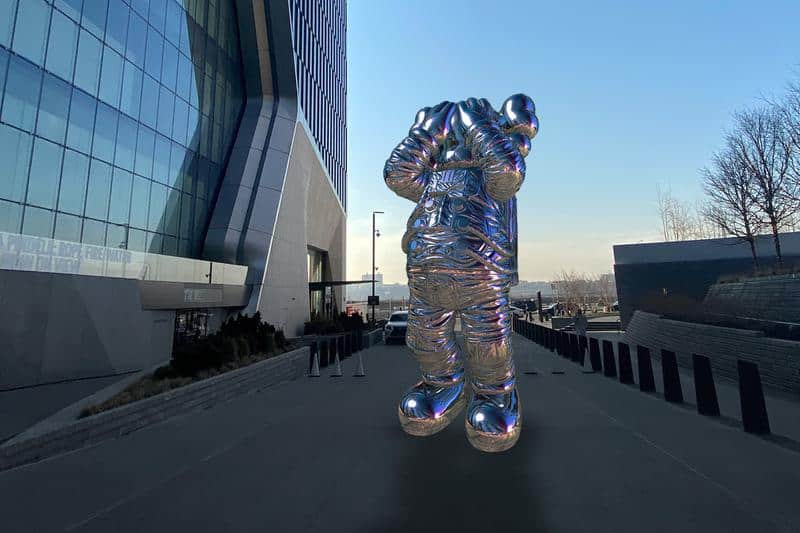Can the metaverse deliver commercial B2B opportunities?
13th February 2023 •
13th February 2023 •

However you get your news, there’s no escaping stories about the metaverse. It’s inspiring a range of conversations across all media and commercial outlets and is definitely going to remain a hot topic throughout 2023 and beyond. Especially in the digital B2B market.
We’ve previously given our own perspective on what the metaverse is and how brands can use it. This is an intentionally broad view because we want to be open to all possibilities – and because things are constantly changing as the out-in-front innovators use their budgets and creative teams to stretch the boundaries.
Ultimately, the metaverse is just an evolution of what the internet is and how we experience it. Furthermore, it’s the qualities behind all the excitement – immersive principles of presence, human connection and interaction – and the outcomes they lead to which are the most interesting ideas to consider and embody. Through that lens the metaverse is already changing (or threatening to change) the way we do business and the way we manage our lives today.
In this next instalment we thought we’d take a look at what sort of commercial opportunities it is beginning to offer to ambitious businesses and how we can use creativity and content to bring it into the marketing mix for existing and new B2B customers.
As technology continues to advance, it’s becoming increasingly clear that it plays a crucial role in our everyday lives. In fact, empirical data suggests that 76% of global consumers say their activities and daily routines depend on technology, with even more stating that their social lives, livelihoods, and wellbeing rely on it. This dependence on technology has not gone unnoticed by brands. Those that prioritise technology and have a strong digital presence tend to have stronger relationships with their consumers. And as the world continues to move towards digital lifestyles and more online activity, it’s no surprise that we’re seeing the emergence of the metaverse – a hub of creativity and innovation where the best content wins and human experiences are key.
Alongside technology, there are certain principles that have always been and will always be true. Creativity and great content have always been key drivers of digital engagement, and that trend is not likely to change as we move into the metaverse. To effectively market to our target audience, it’s important to consider where they can be found in the metaverse and how we can reach them through new, metaverse-like experiences. This is especially important in the B2B space.
So far, the biggest and best examples of commercial marketing in the metaverse have come from consumer brands, artists and influencers. This is because they have larger, more diverse audiences, many of whom are early adopters and already hanging out in metaverse spaces. For B2C brands, this makes investments in metaverse content more worthwhile.
What can B2B brands do to emulate this? You may not have the same audience profile, but you should still study what’s been successful to date. See how you could adopt and adapt those strategies to make your own impact – and make it ahead of the competition.
Perhaps one of the most exciting themes of the metaverse is the feeling of presence and immersion it brings. Immersive experiences enable your audience to feel your brand and experience your story, rather than just listening to what you have to say in the more traditional sense.
It’s the experience that matters in the metaverse. Immersion and interaction that drive connection and meaningful engagement with your brand, which is at the core of why the metaverse has the potential to be so key to marketing. As extended reality (XR) hardware technologies mature, becoming less costly and more accessible, so does the opportunity.
It’s easier than you think to make your brand more immersive. For example, the next time you make a brand video, why not create a 3D world where viewers can see your story play out around them? Or give them an element of control over how they interact with your video, allowing you to expand your brand experience.
The ability of audiences to access this kind of content is becoming less and less of a challenge. Pair it with direct mail and cardboard headsets to encourage them to connect or take it to a show along with VR headsets so they can experience it there and then. People could even interact with it via an internet browser.
B2B brands will be doing this before long – some of the bigger brands already are. So why wait? Harnessing your creativity now will help you to build exciting content that drives interest in and connection with your brand.
Virtual event experiences: This is all about finding creative ways for people to feel that they are ‘there’ – the immersive feeling that gives them a complete experience. While being mindful that some B2B audiences had their fill of ‘virtual’ events during the pandemic, there is real opportunity here. The great thing about virtual events is that they are completely inclusive, regardless of geography. This means that you have the potential to reach a wider audience and connect with them in immersive ways that were previously impossible. Take a space at an industry virtual event, or create your own, where people can walk, talk and interact with your brand from the comfort of their own home or office.
Augmented and mixed reality: The metaverse is often thought of in terms of virtual reality, but it also encompasses extended reality, which combines physical and digital elements. This blend of physical and virtual spaces is starting to be seen in the culture and arts scene, but it’s expected to enter retail spaces and business centres as well, offering new opportunities for B2B marketers.
For example, you could transform the traditional physical event by digitally transporting distant attendees to join. Imagine if you could enable people who couldn’t come to the physical event to join your flagship keynote in virtual reality from their own homes! Sure, you could just stream it and sure, they’d get the information they need, but what your remote audience wouldn’t get a feeling for is the atmosphere, the scale and the privilege of attending themselves. This would not only make a bigger impact on attendees but expand your overall audience.

Alternatively, in New York City, AR art is becoming popular as well. High Line Art and The Shed collaborated on The Looking Glass AR exhibition of virtual sculptures, which allowed viewers to see the artwork through an app as it was overlaid on the surrounding world, creating a new extension of reality. This creative use of technology isn’t limited to art, however. Brands can use it to transform any physical environment into an event space, product exhibition, or virtual experience. This can be done more cost-effectively and efficiently than renting and setting up a physical event space. As AR hardware continues to improve, the possibilities for B2B digital marketing are endless and it will be exciting to see what brands create for early adopters and in the long term.
Partnerships: This space is all about collaboration. Unless you are investing in creating a platform that’s completely yours, you will need to look at partnerships to help you promote your brand. Again, these opportunities are more clearly available to B2C brands, like the example of Gucci and The North Face selling digital clothing for avatars in Pokemon Go. But by using bigger and bolder thinking, B2B marketers can look for – and find – partnerships that allow you to get in front of the right audience. Even if this takes a simpler form at first, like the sponsorship of virtual events and experiences.
PR: Brands, whether B2C or B2B, can take advantage of the viral nature of media coverage that metaverse-like experiences tend to get. By simply engaging with the metaverse and experimenting with new ideas, brands can build and tell powerful stories that not only enhance their brand, but also gain media attention and position them as innovators.
The brands that are trying new things and pushing boundaries are the ones that get talked about online, in the news, and among friends. For example, while not everyone plays Fortnite, many people have heard of the Travis Scott and Ariana Grande concerts that took place in the game. Another example is Wendy’s virtual restaurant, the Wendyverse. This creative approach to engaging with their audience was a media sensation and PR genius. There’s no reason why most B2B brands can’t explore the metaverse in similar ways, creating new ways to engage customers and generate earned media.
The metaverse is an exciting space to be considering as part of your market strategy. We firmly believe that there are opportunities starting to open up for B2B brands in this space – and we’re encouraging our clients to embrace creative content and start to take advantage of these opportunities where they match marketing strategy requirements.
Each time a brand explores the metaverse for commercial outcome, it drives future innovation and creativity. This creates still more new opportunities to connect with potential customers along the way. Bold brands are already starting to exploit these opportunities and that in turn is inspiring other brands to get involved.
We’ll be keeping a close eye on developments that open up exciting opportunities for B2B interaction and how our clients can get involved in commercially viable projects. So, if you fancy being an early adopter then why not have a conversation with us today to determine if there is a metaverse strategy or opportunity that would be suitable for your brand?
